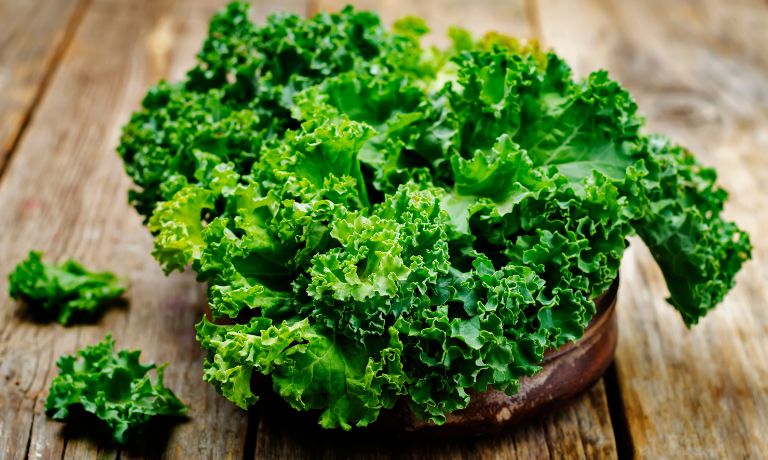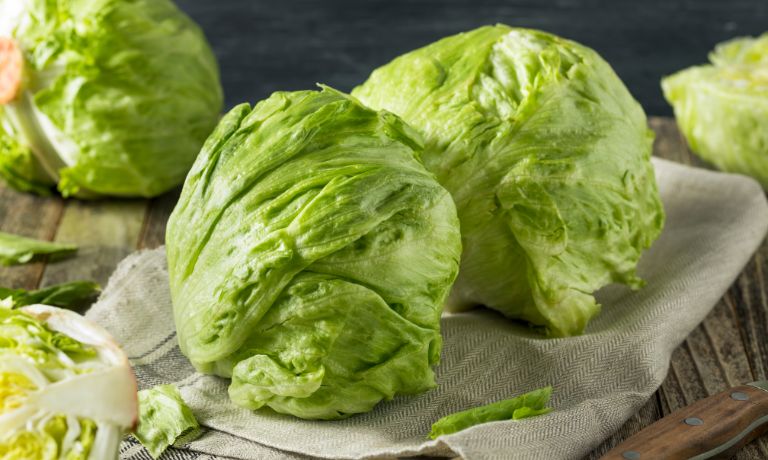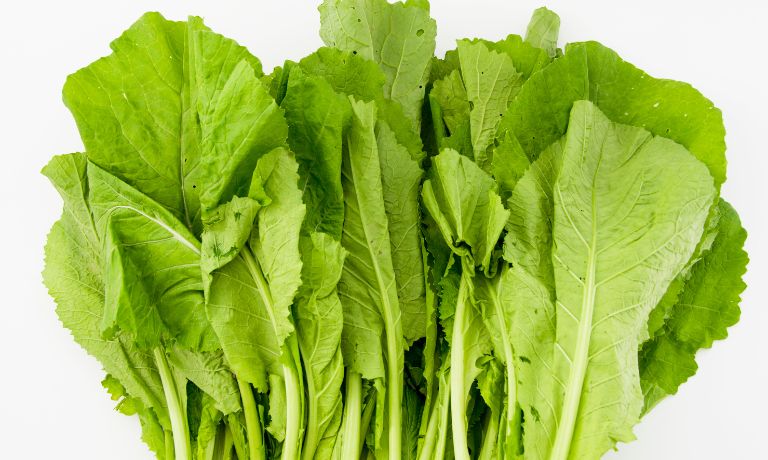Kale has become a staple in health-conscious diets for its nutrient-rich benefits.
Still, despite its potential detoxifying and disease-prevention properties, the leafy green may only be suitable for some.
In this blog post, we’ll talk about some amazing options to substitute for kale that still deliver all the nutritional benefits – without sacrificing taste!
What Is Kale?
Kale is a member of the cabbage family and a nutritious green leafy vegetable. It’s a source of vitamin A, vitamin C, and fiber.
It also contains minerals like calcium, iron, magnesium, phosphorus, potassium, sodium, zinc and manganese.
Kale can be used in various dishes, from soups and stews to salads, casseroles and green smoothies.
It can also be steamed, boiled or sautéed with other vegetables.
For those looking to add more vegetables to their diets, kale is an excellent choice!
Try adding it to smoothies or salads for a flavorful and nutritious boost.
You can also experiment with different kale recipes, like kale chips or kale pesto.

Substitutes For Kale
Kale is a nutritional powerhouse, but if you’re looking for other green options to add to your diet, there are plenty of tasty alternatives to kale.
Collard Greens
Collard greens are members of the cabbage family and have a sturdy, slightly bitter flavor.
They can provide a variety of vitamins and minerals as well as dietary fiber.
Collard greens have become an increasingly popular food choice because they are easy to prepare and store, and versatile in cooking applications.
[display-posts id=”2952″ image_size=”thumbnail” posts_per_page=”1″]
They also offer health benefits such as improved digestion, better eye health, and even cancer prevention.
In addition, collard greens can be cooked in several different ways, including steaming, sautéing, boiling or pan frying.
When cooking with collard greens, remember that they have a robust flavor, so adding some herbs and spices can help to reduce their bitterness.
Collard greens can also be combined with other vegetables, meats, seafood and beans to create delicious meals.

Cabbage
Cabbage is a vegetable that belongs to the same family as kale and other leafy green vegetables.
It has a mild, sweet flavor, with tender leaves that can be eaten raw or cooked.
Cabbage is a source of essential vitamins and minerals such as vitamins K, C, folate, potassium, and magnesium.
Furthermore, it is rich in dietary fiber, which helps promote digestive health.
Cabbage can be used as an alternative to kale in many recipes, such as stir-fries, salads, and soups.
It also works well when cooked with other vegetables or incorporated into dishes like coleslaw.
Unlike kale, cabbage does not require long cooking times to soften its leaves, making it a great addition to quick and easy meals.
Additionally, cabbage is more affordable than kale, making it an attractive alternative for those on a budget.

Baby Spinach
Baby spinach is a type of young spinach that has more delicate, tender leaves than mature spinach.
This spinach contains high levels of vitamins A, C, and K and potassium, calcium, iron, magnesium, phosphorus and folate.
It also contains fiber, which helps to regulate digestion and promote heart health.
[display-posts id=”3089″ image_size=”thumbnail” posts_per_page=”1″]
Baby spinach is low in calories and has a mild flavor that can be used in various dishes, from salads to sautés.
It can be used as an alternative to kale for adding nutrition and flavor without the bitter taste associated with kale.
It is also slightly easier to prepare than kale, making it a good substitute for those who don’t have the time or energy to prepare kale.

Iceberg Lettuce
Iceberg lettuce is often used in salads, sandwiches, and other dishes.
It has crunchy leaves that are usually light green in color, with a mild flavor.
Unlike many other types of lettuce, iceberg lettuce does not have a strong taste or aroma.
Iceberg lettuce can be used in salads, cooked dishes, sandwiches, and other recipes that call for kale.
It has a high water content and a crunchy texture, making it ideal for adding crunch to any dish.
Additionally, iceberg lettuce is low in calories and contains vitamins A and C and some fiber.

Swiss Chard
Swiss chard is a leafy green vegetable from the same family as beets and spinach. It has an earthy flavor and chewy texture.
This vegetable contains vitamins A, C, and K and minerals like magnesium, potassium, iron, and calcium.
[display-posts id=”3043″ image_size=”thumbnail” posts_per_page=”1″]
It also contains a good amount of fiber and protein, making it a nutritious alternative to kale.
Swiss chard can be used in raw and cooked form; it’s delicious when steamed, stir-fried, sautéed, or even roasted.
Additionally, its stems can be chopped for salads or simply eaten as a snack.

Mustard Greens
Mustard greens are leafy green vegetables in the same family as cabbage, kale, and collards.
They have many of the same nutritional benefits as kale but with a slightly more pungent flavor.
Mustard greens are high in vitamins A and K, folate, fiber, calcium, iron, and other minerals.
They are also a good source of antioxidants, which can help reduce inflammation and fight against diseases like cancer.
Mustard greens can be used in many recipes, such as salads, stir-fries, soups, and more.
They can be sautéed in olive oil and seasoned with garlic, herbs, or other spices for a flavorful side dish.
Several popular dishes that use mustard greens are Southern-style collard greens, braised mustard greens, and Tuscan kale and white bean soup.

Broccoli Raab
Broccoli Raab is a type of green vegetable that belongs to the Brassica family, which includes broccoli, kale and cauliflower.
It has smaller heads than traditional broccoli but has the same nutritional benefits.
The leaves are edible and can be cooked or eaten raw in salads.
[display-posts id=”3038″ image_size=”thumbnail” posts_per_page=”1″]
It is high in fiber, a good source of vitamins A, C and K, and important minerals like phosphorus and potassium.
Like kale, it can be added to soups or stews to add flavor and texture or steamed as a side dish. It can also be used in salads, stir-fries and omelets.

FAQs
Can Spinach Be Substituted For Kale?
Yes, spinach can be substituted for kale in most recipes. The taste and texture differ slightly, but it works well in many dishes.
Just adjust the seasonings to your preference.
Spinach is milder than kale, so you may want to add more seasoning or garlic to balance the flavor.
Can Cabbage Be Substituted For Kale?
Yes, cabbage can be substituted for kale in many recipes.
Cabbage has a milder taste than kale, and its texture is softer when cooked.
Can Broccoli Be Substituted For Kale In Soup?
Yes, you can substitute broccoli for kale in soup.
Broccoli has a similar texture and flavor to kale and can be used as an alternative.
However, cooking may take less time than kale, so you may want to reduce the cooking time.
Additionally, if using broccoli instead of kale, consider adding additional seasonings or ingredients such as garlic, onion, and other vegetables to complement the flavor.
Conclusion
Kale is a nutritious leafy green vegetable with many health benefits.
However, several vegetables can substitute for kale in cooking when a milder flavor or easier preparation is desired.
These include baby spinach, iceberg lettuce, Swiss chard, mustard greens and broccoli raab.
These vegetables are nutritious and offer the same health benefits as kale.
Use them to add flavor, texture, and nutrition to your favorite dishes.

